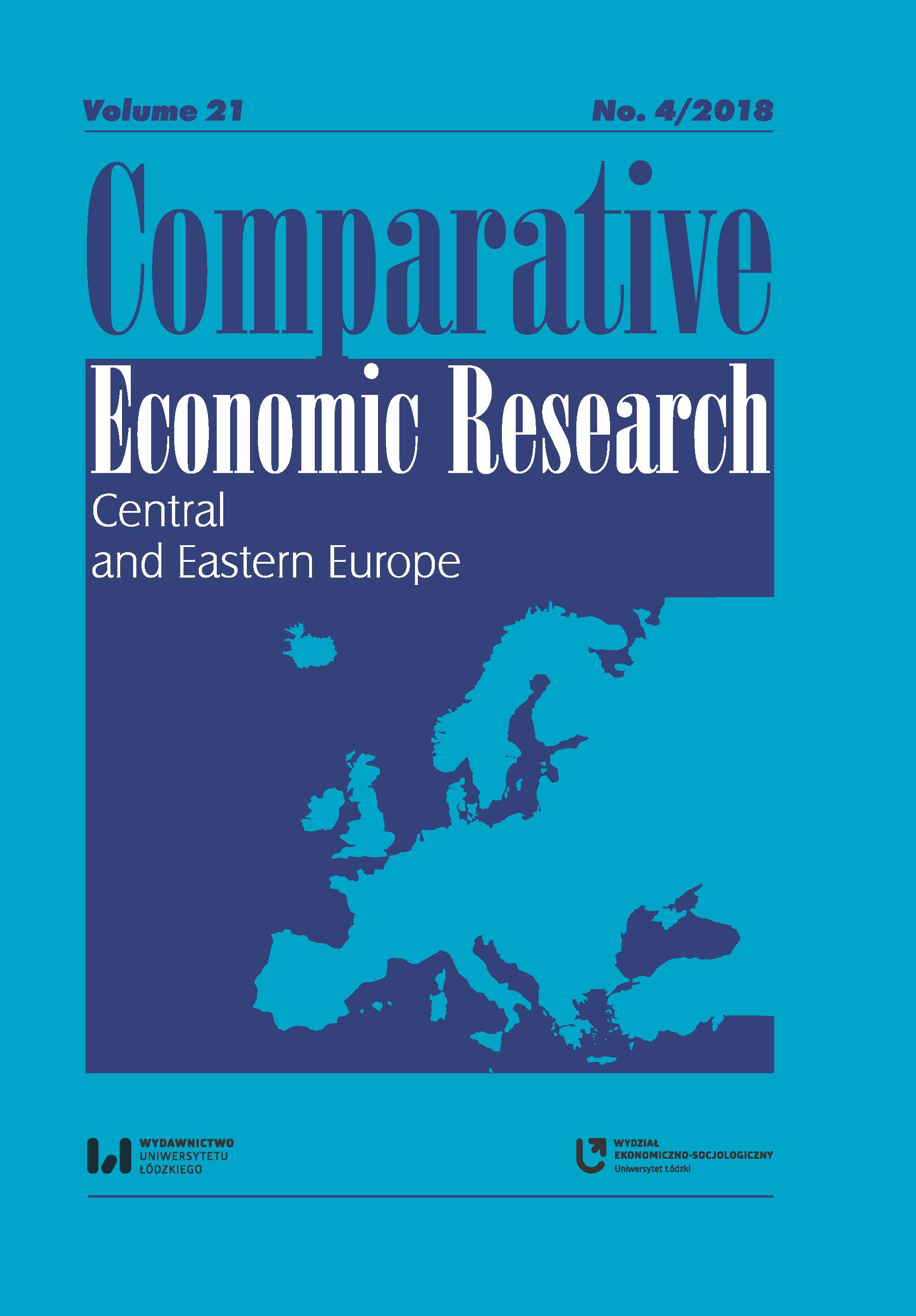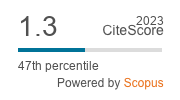Preconditions for the Tax Environment of a Alterglobal Development
DOI:
https://doi.org/10.2478/cer-2018-0031Keywords:
alterglobalization, circular economy, environmental performance index, green taxes, circular tax policy, new economyAbstract
In this article, we analyzed economic surroundings as a precondition for the development of the tax environment in the context of alterglobal development. We admitted that economic globalization is harmful to the environment because it depends on its own viability: the constant increase in commodity consumption, the increased use of resources and the growing disposition to pollute waste in the ocean, on the ground, and in the air. So, we proposed considering and analyzing alterglobalization as a process oriented towards self‑determination for peoples, communities and nations. In this context, we developed the idea about Environmental Fiscal Reform, including increasing green taxation and the phase‑out of environmentally harmful subsidies as well as financial incentives, VAT reductions and tax breaks for green initiatives – providing the perfect conditions for the transition to a circular economy. As the new economy is developing at a rapid pace today – 10% per year, more than three times the global economic growth rate – it has a significant impact on competitiveness.
Downloads
References
Abraham, K., Haltiwanger, J., Sandusky, K., Spletzer, J. (2017), Measuring the Gig Economy: Current Knowledge and Open Issues, available at: https://www.nber.org/papers/w24950 (accessed:November 2017).
Google Scholar
Bardout, M., Hoogzaad, J. (2017), Policy levers for a low‑carbon circular economy, available at: http://shiftingparadigms.nl/wp‑content/uploads/2017/11/24696291–0‑PolicyLeversLowCarbo.pdf (accessed: November 2017).
Google Scholar
Bean, C. (2016), Independent Review of UK Economic Statistics, available at: https://assets.publishing.service.gov.uk/government/uploads/system/uploads/attachment_data/file/507081/2904936_Bean_Review_Web_Accessible.pdf (accessed: November 2017).
Google Scholar
Cavanagh, J., Mander, J. (2009), Alternatives to Economic Globalization: A Better World Is Possible. Berrett‑Koehler Publishers, San Francisco.
Google Scholar
CRM INNONET (2015), D 3.2 Critical Raw Materials Substitution Policies – Country Profiles, available at: http://www.criticalrawmaterials.eu/project‑summary, (accessed: April 2015).
Google Scholar
Dumas, E. (2016), Industry 4.0: how intelligent assets will be part of a circular economyIndustry 4.0: how intelligent assets will be part of a circular economy, available at: http://www.technopropres.fr/ardi_tpss/jcms/z_7786/fr/industry–4–0‑how‑intelligent‑assets‑will‑be‑part‑of‑a‑circular‑economy
Google Scholar
Environmental Performance Index (2018). 2018 EPI Results, available at: https://epi.envirocenter.yale.edu/epi‑topline
Google Scholar
European Environment Agency (2016), Designing tax systems for a green economy transition, available at: https://www.eea.europa.eu/publications/environmental‑taxation‑and‑eu‑environmental‑policies (accessed: 6.09.2016).
Google Scholar
The Ex’tax Project (2016), New era. New plan. Europe. A fiscal strategy for an inclusive, circular economy, available at: http://www.neweranewplan.com/wp‑content/uploads/2016/12/New‑Era‑New‑Plan‑Europe‑Extax‑Report‑exsum–2.compressed.pdf
Google Scholar
Genoff, R. (2017), 4.0 Cities – Putting the Circular Economy to Work, available at: http://www.govnews.com.au/4–0‑cities‑putting‑the‑circular‑economy‑to‑work/
Google Scholar
Goolsbee, A., Klenow, P. (2018), Internet Rising, Prices Falling: Measuring Inflation in a World of E‑Commerce, available at: http://www.klenow.com/internet‑rising‑prices‑falling_GoolsbeeKlenow.pdf
Google Scholar
Green Budget Europe (2017), Annual report 2017, available at: https://green‑budget.eu/about‑us/
Google Scholar
Hosseini, H.S. (2009), Alternative Globalizations: An Integrative Approach to Studying Dissident Knowledge in the Global Justice Movement. Routledge, London.
Google Scholar
Kirchherr, J., Hekkert, M., Bour, R., Huibrechtse‑Truijens, A., Kostense‑Smit, E., Muller, J. (2017), Breaking the Barriers to the Circular Economy, available at: https://www.uu.nl/sites/default/files/breaking_the_barriers_to_the_circular_economy_white_paper_web.pdf
Google Scholar
Mauro, A. (2016), The circular economy: practical steps to enhance the EU package, available at: https://green‑budget.eu/wp‑content/uploads/GBE‑Circular‑Economy‑policy‑briefing‑.pdf
Google Scholar
National Intelligence Council (2012), Alternative Worlds – Global Trends 2030, available at: www.dni.gov/nic/globaltrends (accessed: November 2012).
Google Scholar
OECD (2016), Effective Carbon Rates, available at: http://oe.cd/ECRinterpretation
Google Scholar
Office for National Statistics (2017), The feasibility of measuring the sharing economy: November 2017 progress update, available at: https://www.ons.gov.uk/economy/economicoutputandproductivity/output/articles/thefeasibilityofmeasuringthesharingeconomy/november2017progressupdate
Google Scholar
Pleyers, G. (2013), Alter‑Globalization: Becoming Actors in a Global Age. John Wiley & Sons, London.
Google Scholar
Probst, L., Frideres, L., Cambier, B., Lidé, S. (2016), Sustainable supply of raw materials. Optimal recycling, available at: Eurostat.eu (accessed: February 2016).
Google Scholar
Schlembach, R. (2016), Against Old Europe: Critical Theory and Alter‑Globalization Movements. Routledge, London.
Google Scholar
Shane, G., Nagle, F. (2014), Digital Dark Matter and the Economic Contribution of Apache, available at: https://www.hbs.edu/faculty/Pages/item.aspx?num=44421
Google Scholar
Suez Environnement. (2014), Innovation at the heart of sita, a subsidiary of suez environnement, is making progress in europe: in Antwerp, Belgium, a new glass recycling plant is capable of making four different colours of glass, available at: www.suez‑environnement.com, (accessed: 5.06.2014).
Google Scholar
Waddingham, I. (2018), Innovation of circular economy, available at: http://www.mooreandsmalley.co.uk/latest‑blogs/innovation‑circular‑economy/
Google Scholar
Downloads
Published
How to Cite
Issue
Section
License

This work is licensed under a Creative Commons Attribution-NonCommercial-NoDerivatives 4.0 International License.











